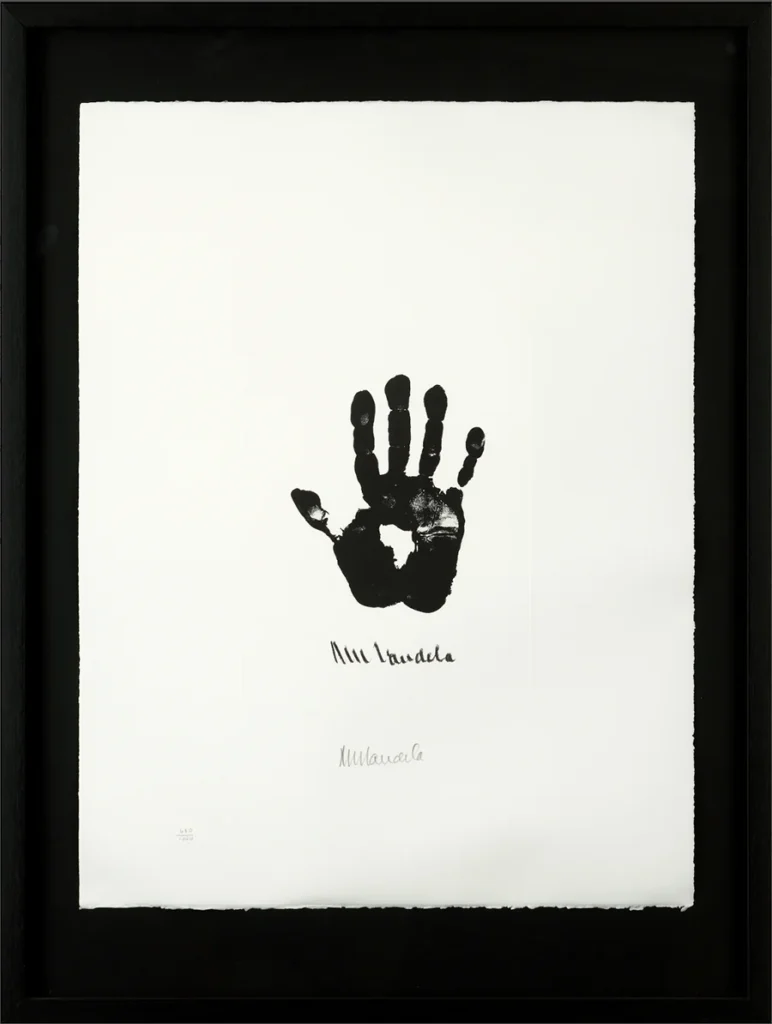Introduction to Nelson Mandela’s Art
Nelson Mandela, widely known for his role in South Africa’s fight against apartheid, turned to art later in life. His works are reflections of his journey and experiences, with his artwork carrying significant symbolic meaning. “Hand of Africa” is one of the most iconic pieces Mandela created, symbolizing his deep connection to his country and continent.
The Creation of Hand of Africa
“Hand of Africa,” a limited edition lithograph created in 2002, features the impression of Mandela’s right hand. This artwork is part of his “Impressions of Africa” series, drawn in his 80s after his presidency. The unique aspect of this lithograph is that Mandela’s handprint resembles the shape of the African continent, adding a powerful visual metaphor of his legacy.
Symbolism of the Artwork
The “Hand of Africa” is more than just an artistic expression; it represents Mandela’s influence and the deep-rooted connection between himself and the continent. His hand, which reached out in peace and unity, is symbolized here as holding Africa together, reflecting his efforts to unite the nation and his legacy as a global symbol of resilience.
Artistic Legacy and Impact
While Mandela’s political and humanitarian contributions are well known, his venture into art highlighted another facet of his life. This artwork has become a highly collectible piece, with copies being sold for thousands of dollars due to its significance, and its ability to remind people of the hope Mandela embodied.
A Lasting Symbol
“Hand of Africa” continues to serve as a lasting reminder of Mandela’s impact on South Africa and the world. It blends his identity as a leader with his artistic vision, symbolizing both his personal journey and the broader African struggle for freedom.
This lithograph remains an important part of his legacy, showing how one man’s touch can inspire and unite an entire continent.

